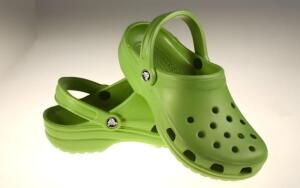by Dennis Crouch
A recent petition for certiorari in Crocs v. Dawgs asks the U.S. Supreme Court to clarify whether the Lanham Act's false advertising provision can reach a company's false claims that its product is patented. Crocs argues that the statute's prohibition on misrepresentations about a product's "nature, characteristics, [or] qualities" should be limited to tangible attributes and thus should not extend to intangible legal designations like patent status. I argue here that this interpretation creates a fundamental problem that Crocs appears to have overlooked: the same statutory language applies equally to services, which are inherently intangible and lack any tangible characteristics that could be misrepresented under Crocs' proposed framework. [Petition for a Writ of Certiorari][Appendix]
The case arises from a long-running legal battle between Crocs – maker of the eponymous foam clogs – and Double Diamond (known for “Dawgs” shoes) that began back in 2006 with a design patent infringement lawsuit. The most recent battle grounds is a counterclaim by Double Diamond alleging false marketing under § 43(a) of the Lanham Act (15 U.S.C. § 1125(a)) -- particularly alleging that Crocs falsely marketed the its "Croslite" foam material as “patented,” “proprietary,” and “exclusive.” In fact, the material was not patented and was essentially the same EVA foam many competitors use. Double Diamond contended that this misleading use of patent-related terms gave consumers the (false) impression that Crocs’ material was unique or superior.
To continue reading, become a Patently-O member. Already a member? Simply log in to access the full post.
